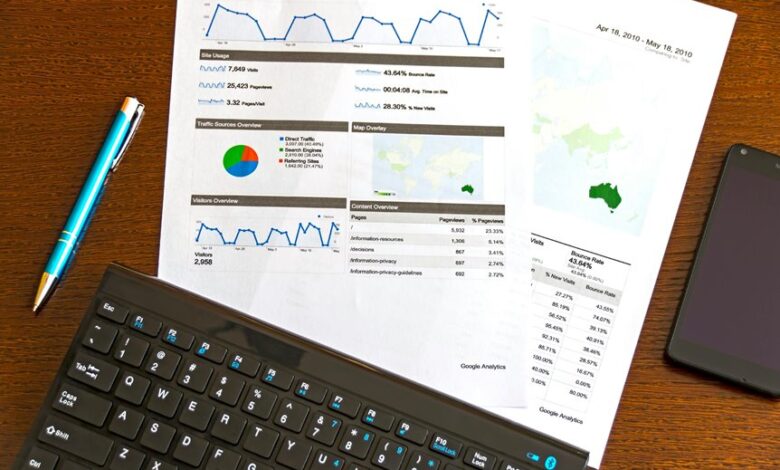Unlocking Data-Driven Insights 3533964740

In an era where data reigns supreme, businesses face the critical task of harnessing its potential. Analytics provides a framework for interpreting complex information and transforming it into strategic advantages. Various methodologies and tools can reveal invaluable insights into market trends and consumer behavior. However, many organizations still struggle to implement these techniques effectively. This gap raises questions about the obstacles hindering optimal data utilization and the opportunities that lie ahead.
The Importance of Data Analytics in Modern Business
As businesses navigate an increasingly complex landscape, the role of data analytics has emerged as a pivotal factor in driving strategic decision-making.
A robust data-driven culture fosters analytics adoption, empowering organizations to leverage insights effectively. This transformation not only enhances operational efficiency but also cultivates innovative strategies that align with market dynamics, ultimately promoting sustainable growth and enabling businesses to thrive in competitive environments.
Key Methodologies for Data Analysis
In the realm of data analysis, several key methodologies play a crucial role in transforming raw data into actionable insights.
Descriptive statistics techniques provide foundational summaries, while predictive modeling approaches enable forecasting future trends based on historical data.
Additionally, data visualization tools enhance comprehension and communication of complex datasets, making them accessible to a broader audience.
Descriptive Statistics Techniques
Descriptive statistics serve as foundational tools in the realm of data analysis, providing a succinct summary of complex datasets.
Techniques such as mean calculation, median, and mode facilitate an understanding of data distribution, revealing central tendencies and variability.
Predictive Modeling Approaches
Building on the insights provided by descriptive statistics, predictive modeling approaches offer advanced methodologies that allow analysts to forecast future trends and behaviors based on historical data.
Techniques such as time series analysis and regression analysis enable the identification of patterns and relationships within datasets.
Data Visualization Tools
Effective data visualization tools serve as crucial methodologies in the realm of data analysis, transforming complex datasets into comprehensible visual formats.
Interactive dashboards facilitate real-time data exploration, allowing users to engage with information dynamically.
Moreover, visual storytelling enhances understanding by integrating narrative elements with data, thereby fostering deeper insights.
Collectively, these tools empower individuals to make informed decisions based on clear visual representations.
Tools and Technologies for Unlocking Insights
Harnessing the power of advanced tools and technologies is essential for organizations aiming to extract meaningful insights from their data.
Machine learning algorithms enable predictive analytics, facilitating decision-making in real-time. Coupled with big data frameworks, these technologies allow for the processing of vast data sets, unveiling trends and patterns that drive strategic initiatives.
Such insights empower organizations to navigate the complexities of modern markets.
Understanding Consumer Behavior Through Data
Although organizations have access to a wealth of data, understanding consumer behavior requires a nuanced approach to analysis.
By employing demographic analysis and behavior segmentation, businesses can identify consumer trends and purchase patterns.
Techniques such as empathy mapping, sentiment tracking, and engagement metrics provide deeper loyalty insights, enabling organizations to tailor strategies that resonate with their audience and foster a sense of freedom in consumer choices.
Optimizing Operational Efficiencies With Analytics
Consumer behavior insights can be harnessed to not only enhance marketing strategies but also to optimize operational efficiencies within organizations. By leveraging analytics, companies can refine process optimization and improve resource allocation, leading to increased productivity and reduced costs.
| Metric | Impact on Efficiency |
|---|---|
| Process Optimization | Streamlined workflows |
| Resource Allocation | Cost reduction |
| Data Analysis | Informed decision-making |
| Performance Monitoring | Enhanced accountability |
Real-World Case Studies in Data-Driven Decision Making
As organizations increasingly rely on data to shape their strategies, real-world case studies illustrate the transformative power of data-driven decision making.
Healthcare analytics has improved patient outcomes, while marketing insights have refined customer segmentation. Financial forecasting enhances risk management, and supply chain optimization boosts efficiency.
Additionally, sports performance analytics and social media analysis provide actionable intelligence, empowering organizations to achieve strategic objectives.
Conclusion
In the intricate tapestry of modern business, data analytics serves as the loom that weaves together threads of insights and strategies. Much like a seasoned navigator relies on the stars to chart a course, organizations harness data to illuminate paths toward growth and efficiency. For instance, a retailer that analyzed customer purchasing patterns increased its sales by 20% in one quarter alone, showcasing how turning raw data into actionable insights can transform business trajectories and foster sustainable success.




